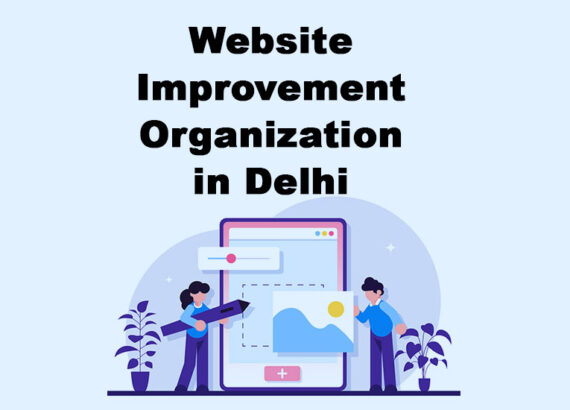We’re living in a moment where the internet is changing right before our eyes. It’s no longer just about ranking on Google or showing up on page one. Now, it’s about being the answer, literally. Tools like ChatGPT, Google SGE, and Perplexity are reshaping how people search for information. And with this shift comes a new opportunity: Getting cited by AI.
Imagine your name, your brand, your article—appearing right inside an AI-generated answer that millions of people read. That’s not just visibility. Actually, it’s trust, relevance, and achievement too! But the real question is, how to make that happen? That’s where AEO and GEO come in.
The Digital World Has Changed, So Should Your Strategy
If you’ve been putting all your efforts into traditional SEO, you’re not doing anything wrong, but you might be doing things a little late. Search engine optimization got us this far, but AI isn’t playing by the same rules. It doesn’t care as much about keyword stuffing or backlink counts. It cares about clarity, expertise, and whether your content actually answers the user’s question.
AEO: Answer Engine Optimization is about creating content that speaks directly to AI, so it knows exactly what to do with it. GEO: Generative Engine Optimization is the broader picture. Moreover, it’s about making your entire online presence AI-friendly, so you’re seen, trusted, and quoted by the systems powering tomorrow’s searches.
Why Being Cited by AI Matters More Than Ever
Well, you can think about how often people now ask ChatGPT something instead of Googling it. Think about how many rely on Siri, Alexa, or Gemini to summarize what they need to know. AI isn’t just helping people find content anymore; it is the content.
Furthermore, getting cited by AI tools gives you an edge that even first-page rankings can’t match. It puts your voice inside the answers people see first. It gives your brand an almost unconscious familiarity with users who may never have visited your site before, but now trust you, simply because AI mentioned you. Now, it’s actually about relevance more than digital presence.

Structuring Your Content to Speak AI’s Language
See, now it’s about AI picking your content as a reference and adding you in the citations. For that, you’ll need to understand and structure your content in a way that aligns with how AI understands context. But this doesn’t point towards crafting robotic content or stuffing keywords. Instead, it’s about clarity, intent, and question-focused answers. When your content clearly answers common queries—like “What is AEO?” or “How do I get cited in ChatGPT?”- you become a candidate for AI citation.
This is why it helps to include direct definitions, explanations, and logical flow throughout your content. Break down topics step by step. Use clear headings that mirror real search queries. Think about how a curious person would phrase a question to an AI, and answer that directly in your content. The more your structure matches the natural language of prompts, the better your visibility will be in AI responses.
Build a Reputation, Not Just a Blog Post
One well-written article won’t get you cited forever. What AI wants is depth. Topical authority matters far more than keyword repetition. If you want AI to see you as a go-to voice in your niche, you need to build a connected web of content around your area of expertise. Content that is exactly what people want to read!

Use Schema Markup Effectively
Schema helps Google and AI tools understand your content contextually. It’s like giving AI a shortcut to comprehend and validate your authority. If you’ve never touched schema before, now is the time to start. Many content management systems and SEO plugins offer user-friendly schema generators. Make sure your articles, FAQs, and about pages include explicit metadata such as author information, publishing date, and content type. All of this contributes to what AI considers “trust signals.”
Show the Bots You Know Your Stuff
It’s today’s AI that doesn’t just favour good writing, it favours trusted voices. Add a strong author bio, and mention your achievements and expertise with proof. Show that your insights are rooted in something more than opinion. This isn’t about bragging, it’s about giving AI confidence. When your content is backed by personal experience or professional insight, it becomes much more than an article. It becomes a source. And AI tools are there to find, evaluate, and amplify sources.
Keep Your Content Fresh and Alive
One of the most overlooked strategies in AEO and GEO is content freshness. AI tools, especially those connected to real-time web sources, favour recent data. They tend to avoid outdated posts with old stats, broken links, or irrelevant advice. Your goal is to keep your content calendar consistent while keeping it fresh.
Keep your articles updated. Revisit them every few months. Add new stats. Replace broken links. Rewrite intros to reflect the current year. Even a minor update can push your content back into the spotlight. AI wants to give users today’s answers, not yesterday’s guesses. And if you have the capacity, try including original research, surveys, or personal data insights. AI tools love new information. If you provide something unique that no one else does, your chances of being cited skyrocket.

Use Bigger Platforms to Get Noticed
Not all websites get equal treatment. If you’re still building your blog’s authority, don’t wait to be discovered; go where the attention already is. Publish articles on LinkedIn. Submit guest posts to Medium. Use other platforms such as Forbes, HubSpot, Reddit, Tumblr, and more.
These platforms act as distribution hubs for your expertise. So, while your own blog might not yet have the domain strength for AI citations, your guest articles or external contributions can serve as bridges. Over time, those citations can lead back to your main site, boosting its reputation and increasing your citation potential across all platforms.
Testing if AI Tools Cite Your Content
You don’t have to sit and wonder whether your content is working. You can test it. Start by entering your primary keywords or topic into ChatGPT, Gemini, or Perplexity. Open ChatGPT or Perplexity and type in a question you’ve written content about. See who it mentions and see what tone, depth, and structure those sources have. Then ask again in a different way.
This isn’t just a vanity test. Indeed, it’s valuable feedback. You’ll start to understand exactly what these tools favour and how your content stacks up. It’s also a powerful motivator, somehow. Seeing your competitors on AI citations can light a fire under your strategy like nothing else.

Conclusion
Finally, we’re stepping into a future where being the source behind an AI answer is as powerful as having a viral post or ranking #1 on Google. If you want that kind of visibility and influence, you can’t ignore AEO and GEO anymore. So, start now!
For more such amazing updates, follow Nextr Technology!
Thank you for reading
Buy Web Hosting at an affordable price: Buy Now.
If you want to build your website at an affordable price, contact www.nextr.in
Read this: How AI is Changing Education


















